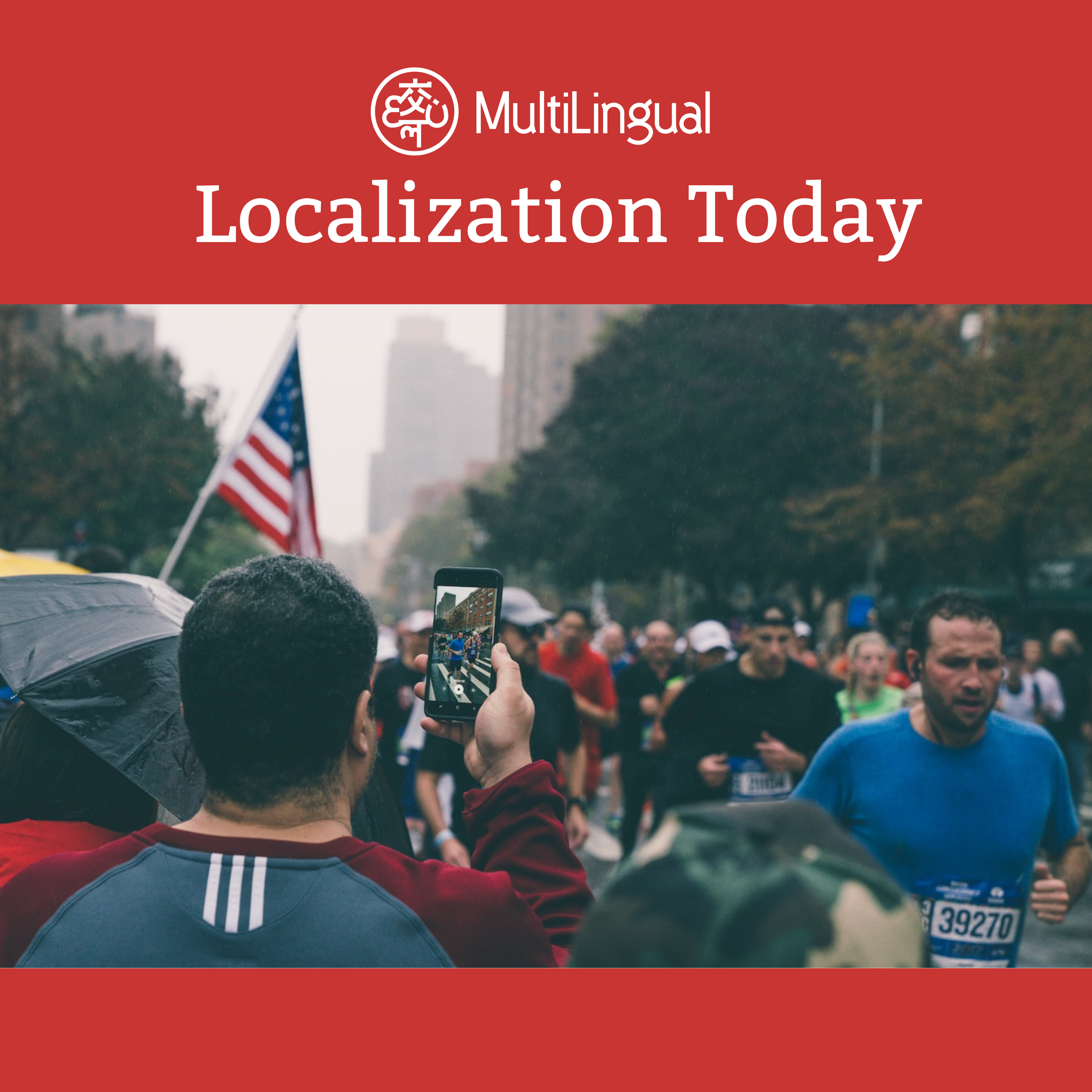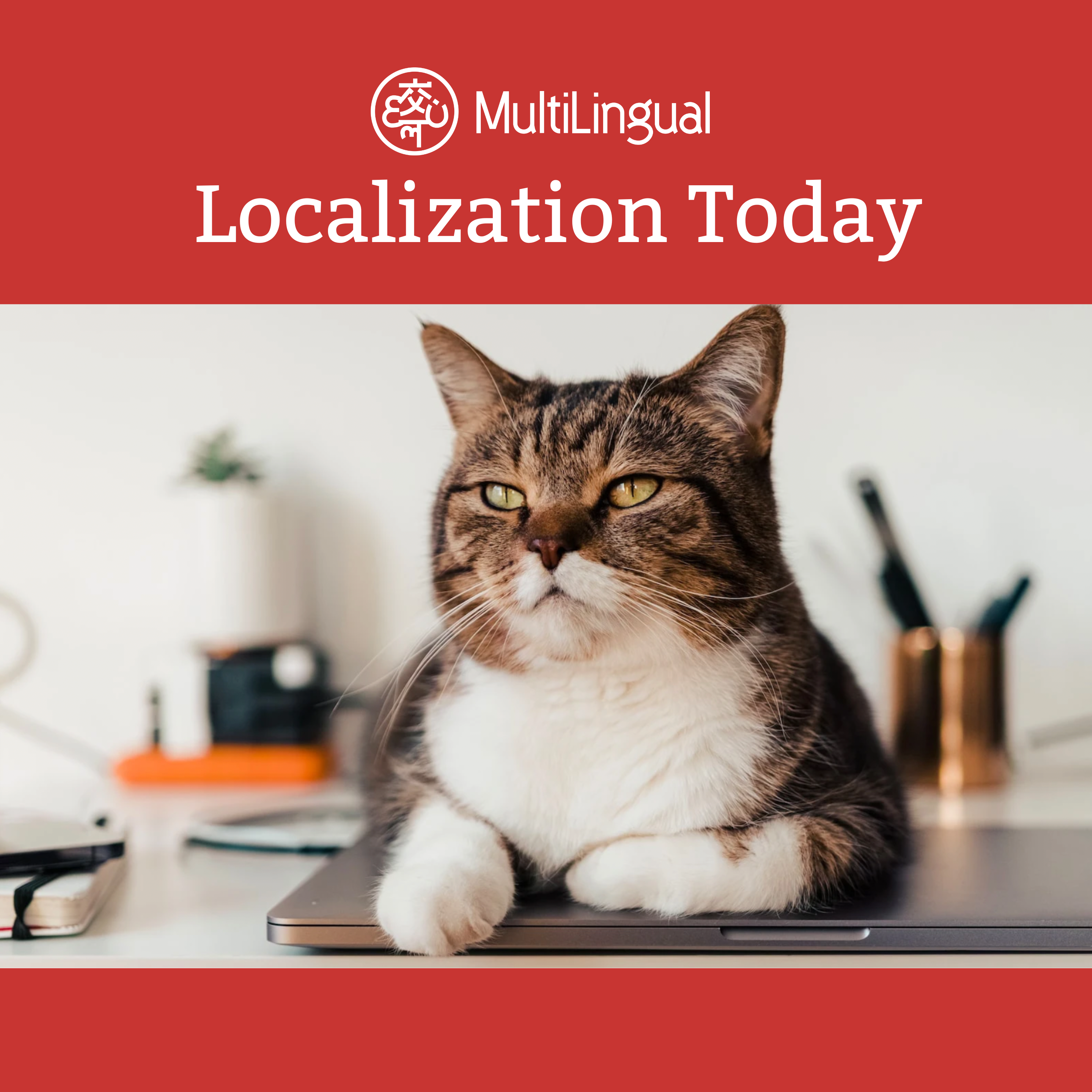Episode Transcript
[00:00:00] The case for TMS connectors in the hyper personalization era by Istvan Lingel personalized connections foster customer engagement, satisfaction, and loyalty. But deeply connecting with individuals, unlike with groups of people, was traditionally hard to achieve for businesses online because understanding the needs of every person does not scale well in a digital world. And make no mistake, even in business to business relationships, people buy from people. So the same challenges apply. However, with the combination of real time data analytics and some artificial intelligence, technologies involved in the multilingual content cycle are getting closer to realizing this vision of hyper personalization. Although hyper personalization is a growing trend in enterprises as they seek to build better engagement with customers, very few localization departments are currently prepared to address this challenge. Enterprises that cater to international markets need the support of well configured content automations and localization workflows that collate across departments, content types, languages, and modalities. This is where connectors for translation management systems come into the picture. Connectors help converge the multitude of platforms involved in multilingual content creation, translation, and publishing in the central language hub of the TMS via orchestration.
[00:01:30] Understanding hyper personalization to use the analogy of a local pub, hyper personalization is not the same as the bartender getting regular customers their usual. Rather, its more like when the wait staff anticipates the customers next action based on their mood. Jolly may mean celebration, gloomy signals, just one drink, how they're dressed casual means here to stay, business suit says, blowing off steam. What they have with them. Groceries means quick visit only, a credit card means beer for everyone or who they arrived with. Friends means a big table alone means at the bar. And all the while, the staff speaks the language that befits the circumstances. The data that the waitstaff sees and interprets to cater to your needs in the pub is exactly the kind that enterprises need to personalize their messaging to their customers. Companies and individuals, even in the same locale, exhibit differences in how they perceive, purchase and use products and services, and these change depending on their journey and context. Hyper personalization does not start and end with marketing. It is the way to engage with current and potential customers in product development, sales, billing, post sales, service, and more. For hyper personalization to work, content must be processed fast, just as the bartender sizes you up in seconds, enriched with abundant metadata based on customer characteristics, and adjusted on the fly to fit the purpose across the various touch points of the end to end customer journey. The content must be connected to a wide array of systems and data sources, especially in a multilingual setting. The right language platform, the ability to assign the right translation modality based on content type and metadata is a defining feature of modern localization platforms. By aggregating and orchestrating different translation modalities, including the data needed to enrich them across various content creation and delivery platforms, the modern TMS establishes itself as a central enterprise localization hub with content connectors that enable application programming interface driven data exchange. They transcend the traditional TMS label to encompass upstream content tasks, becoming true language platforms. In other words, this connectivity, aggregation, and orchestration are the strengths of modern localization platforms or the saving grace for the TMS. Many in the industry forecast the downfall of traditional static and standalone TEMS solutions. It's hard to disagree with that, given the progress in content infrastructure and the increasing demand for automations and integrations in recent years. In a simplistic future scenario, plugging in an automated translation engine, say, a context aware large language model LLM, and a simple post editing interface into the content management system, CMS solves the multilingual processing problem without needing a TMS. However, such a solution only works if the CMS is the only client side content repository, and even then it doesn't scale. Large enterprises with hyper personalization in mind need a localization platform that is scalable, is consistent across languages and locales, and has the ability to cater to the diverse multilingual content needs of the enterprise's customers. This assumes connections to input systems beyond a CMS, including for pricing, product information management, PIM, digital asset management, dam, enterprise resource planning, ERP customer service, or e commerce. The connectivity challenge the localization industry has come a long way when it comes to connecting all kinds of content repositories to tmss. In the early two thousands, the industry made a first attempt to tackle the connectivity challenge by developing advanced file filters for different source file formats and aiming to standardize data exchange through the XML localization interrane file format.
[00:05:51] Next, the focus shifted to automation and connectors, leading to a breakthrough in connecting translation business management systems to computer assisted translation KEC tools, a scenario typically benefiting the supply side of the localization spectrum. The latest developments are centered around enterprise language needs. From an enterprise localization perspective, connectivity is often centered around cmss, and the challenge seems relatively straightforward. Take any major CMS and automate data exchange with the TMsdua PIs in a way that works for all CMs.
[00:06:31] So why isn't this the default approach for language work across all enterprise localization programs? Some of the reasons are that many enterprises build their own content repositories, heavily customize off the shelf cmss and slash, or have use cases that can't be supported by traditional point to point connectors or require additional systems to be plugged in for the connection to produce the expected results.
[00:06:58] Furthermore, many TMS providers develop APIs as an afterthought, often with insufficient documentation and priced without transparency, making it challenging for customers and users to make informed decisions. Automation is also often thought of as a productivity booster rather than an enabler, and this decreases its priority and affects how its return on investment. Roy is calculated given the wide range of systems that take part in the wider localization process, spanning from request to billing across a large enterprise, this approach is not scalable. Content sources such as cmss, customer relationship management systems, serums, dams, and code repositories, as well as task management, business intelligence by procurement team collaboration, and user interface design tools all take part in getting the right content delivered to current and potential customers. Linking each of these systems individually to a central language hub is a daunting task for localization programs if they need to be built from scratch. Due to the associated cost, time, and complexity. The envisioned holistic integration is oftentimes left at just that, a vision instead of reality blocking the automations required for hyper personalization.
[00:08:21] The integrated platform approach certain vendors bring a fresh take on the problem with their API first approach. This improves the integration experience by providing robust APIs accompanied by detailed documentation, providing the abstraction that technical staff unfamiliar with the translation management discipline may require a lets take frase as an example as one of the leading players in the TMS space with a very high innovation capability. According to NIMSI Insights TMS Compass analysis, Frase offers a comprehensive and innovative automation and integration infrastructure with multiple layers. The foundational layer spans the entire platform, providing users with an extensive feature set to, for example, monitor content repositories, automate project creation, and manage continuous workflows for software keys or other specialized content types. The second layer includes a connector inventory with integrations for cloud storage buckets, version control systems, UI design tools, web cmss, and marketing automation platforms. These integrations, comprising both connectors that pull content for translation and plugins that push content from third party systems into the TMS, are designed to meet between 80 and 90% of typical integration needs. Finally, robust APIs and software development kits SDKs are available to deliver the final ten to 20% of the typically required custom functionality.
[00:09:57] This layered integration approach significantly reduces the complexity of creating integrated localization systems. Custom connector development time can be as little as ten to 20% of what it would be without an integration layer and connectors become more manageable and even portable. Even if the underlying APIs or systems are updated, the TMS vendor may perform this change transparently with effort, time, and complexity. Barriers to connectivity lowered, enterprise localization teams can more confidently execute towards hyper personalized multilingual content flows. The rise of orchestration with the launch of Blackbird and frase orchestrator in 2023, the TMS market made a significant attempt to address the connectivity challenge for non technical localization stakeholders. In the past, multiple companies attempted this challenge with headless TMS and bulky connector boxes, but all products remained small compared to non localization integration platforms epos such as Make.com, comma, Mulesoft, and Zapier. While these generic epos provide a backbone for connections between API and webhook enabled systems over the cloud, no such system explicitly aimed at localization workflows before frase orchestrator and Blackbird, no code or low code orchestrators promote the ability to build workflows easily through a drag and drop interface, bypassing heavier TMS features. Workflow orchestrators allow for the creation of sophisticated event driven processes supporting conditional workflow steps and more advanced integrations via webhook triggers. These managed automations and routing mechanisms, which are essential for catering to the diverse but interconnected multilingual content flows in an enterprise setting, are now achievable with less technical expertise than ever before. As businesses expand into new markets, they inevitably face the complexity of managing content across systems, cultures, and languages. Orchestrators serve as the glue that connects different components of an enterprise localization ecosystem, ranging from connectors and by assets to workflow automation, allowing businesses to meet complex objectives, customize processes, and scale effectively. The advent of orchestrators is a vital step to complement non localization epos by filling a long standing gap in language technology as well as an enabler for localization managers to run their programs with a vision of hyper personalization.
[00:12:37] Wrap up localization departments are under constant pressure to demonstrate to the business the value they provide. An interconnected localization platform supports this bye, collating data from across business systems, orchestrating efficient workflows, connecting localization efforts to tangible business results such as time to market, international revenue growth, brand awareness and customer engagement, and supporting the decision making process across stakeholders. TMS connectors are an interesting and important area in which to invest. Theyre part of the future as enablers of hyper personalization and efficient automations across business systems relevant to multilingual content. With the right platform under the hood, creating custom connectors is not as complex as it was. Even a few years ago. This lowered complexity means less technically savvy language teams can also embark on the journey to creating holistic, multilingual customer experiences. Ultimately, this is the great opportunity for modern, integrated, and orchestrated language platforms. They help localization teams focus on their core tasks of reaching customers efficiently in their own personalized language, thereby creating outcomes that are highly valued across the business instead of getting bogged down in the weeds of heavy engineering. This article was written by Istvan Lengyel, a technology consultant for Nimsi Insights and the founder of Belazi, a project management automation company. Originally published in multilingual magazine, October 2024, issue 233.


